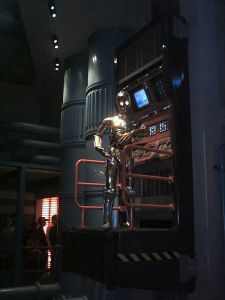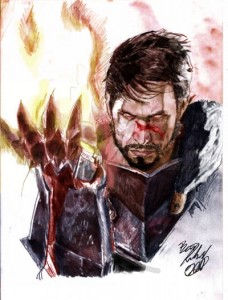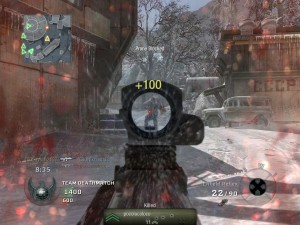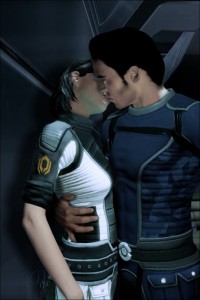The moment Star Wars: The Old Republic was open for beta, thousands of players have refused to look back at their old MMOs again. Why? Because BioWare is ingenious, and that’s just not me being biased. They changed the way we play RPGs and now they’ve reinvented the MMO. Through basic comparison, I’ll show you how even MMO-haters can fall in love with this game.
Your standard MMO looks something like this: Tolkien-esque fantasy where humans, dwarves, and elves—plus a few other guys, depending on the developer—come together again and unite against the evil threatening the world! Quests are all pretty generic Kill Counts or Messenger Boy; kill-ten-of-monster-Y-and-bring-their-toes-to-NPC-Z or take-this-note-to-NPC-F-and-bring-back-his-package. You finish quests in one area and move to the next to do the same-thing-different-town, all the while under the assumption that your character—like all the others—is an adventurer seeking, well, adventure. And glory and riches and whatever else; unless you’re a role-player, then you probably have some epic story to fuel your motivations that no one else will ever know of.
Eventually, you get enough experience to level up and you earn or purchase new skills and get new armor, which probably looks the same as your old armor but in different colors, and then you reach max level, join a guild, and go raid epic mobs, or the game virtually ends for that character. Don’t worry! There’s always crafting. Which varies game-to-game on its impressiveness, but usually it involves assembling ingredients and standing over your crafting station (pots for cooks, forges for blacksmiths, chemistry sets for alchemists, et cetera), picking a recipe, and clicking a button. Some people get a kick out of this; I, on the other hand, would rather gouge my eyes out with a rusty spoon.
And there’s your basic MMO. Impressive, right? Well, it used to be before BioWare stepped in. You might ask, “Why would you put yourselves through such repetitive turmoil?” And we might reply, “Ask the Call of Duty players that first and then come back and ask.” Anyway, as I said: BioWare changed everything, and not just by ripping away the classic Tolkien scenario and plunging us into the epic galaxy of Star Wars, but by rethinking the way a person plays.
First of all, character creation felt extended; no, there are no sliders that allow you to uniquely set the jawbone height and chin width of your character, but with body types, head types, and a slew of complexions, it’ll be pretty challenging to find your twin in the galaxy any time soon. The best and most surprising part is the ability to create heavy-set characters; the interesting thing is that people have! I’ve wandered around and seen so many chubby characters, its incredible; plus, over half of the complexions a person can choose involve freckles, sunburn, sun spots, scarring, disease-like blemishes, and various other imperfections. And yes, people use these. I guess that means not everyone cares about being the super-skinny, lithe, and impossibly beautiful elf like developers thought.
Now to move on to actual game play. Quests are no longer Kill Counts and Messenger Boy; yes, both types are parts of the quests, but not the whole of them. Instead, you go around sabotaging gang swoop bikes or freeing prisoners or collecting stolen merchandise; many quests come with bonus missions, and that’s where the Kill-Ten-Z comes into place. Second of all, every class has their own Class Quest, where they experience a unique adventure that motivates their progress through the galaxy. Take my Jedi Knight for example; she isn’t hopping planet to planet righting the wrongs and triumphing over evil just because (that makes no sense, after all); she actually starts off hunting down weapon designs stolen from the Republic by Imperial forces. Once she completed those missions, she learns two Jedi Masters have missed several of their comm. checks and the Republic fears the worst; she is sent to investigate their whereabouts and potentially rescue them. She does all the side quests because people are in trouble and she helps out because she’s a Jedi. If you play, for instance, a Smuggler, your motivation for helping is probably the credits.
Which leads to the classically BioWare method of picking and choosing your character’s personality and destiny. Every conversation presents you with a dialogue wheel, in which three options are given. Typically amusing responses, serious responses, or sarcastic/mean responses are available; some options reward you with light side or dark side points, further establishing the type of person your character is. Oh, and did I mention the entire game is voice acted? All of it, including your very own character. How’s that for impressive? Plus, there’s a ripe balance of action with cut-scenes that show off your character and friends. Did I mention the physics engine on the cloaks and skirts? It moves like its real!
 While including many new and exciting components, BioWare also adopted many things considered normal to MMOs. You level up and purchase new skill points and, at level 10, you pick your specialization class that unlocks three skill trees for you to pick and choose how your character succeeds in battle. My choices were Jedi Sentinel, a dual-wielding DPS, or Jedi Guardian, the tank. I chose Sentinel (come on, dual-wielding lightsabers is just too cool), and my skill trees allowed me to pick the type of damage I would do. Damage-Over-Time, debuff, or direct. I chose direct damage, but I know plenty of people who went another route. This is all pretty typical in the MMO world, and it makes a player feel comfortable with their character and how to use them instead of introducing a new and potentially complicated system players may shy away from.
While including many new and exciting components, BioWare also adopted many things considered normal to MMOs. You level up and purchase new skill points and, at level 10, you pick your specialization class that unlocks three skill trees for you to pick and choose how your character succeeds in battle. My choices were Jedi Sentinel, a dual-wielding DPS, or Jedi Guardian, the tank. I chose Sentinel (come on, dual-wielding lightsabers is just too cool), and my skill trees allowed me to pick the type of damage I would do. Damage-Over-Time, debuff, or direct. I chose direct damage, but I know plenty of people who went another route. This is all pretty typical in the MMO world, and it makes a player feel comfortable with their character and how to use them instead of introducing a new and potentially complicated system players may shy away from.
Back to the innovations, BioWare introduced Companions: NPCs that join up with your character and accompany you on your journey, and they are unique to respective classes. Example: as a Jedi Knight, I meet a little droid named T7 who joins my crew; only other Jedi Knights have a T7 companion. You can find gifts to give your companions to raise their affection rating and take them with you on missions and quests for additional DPS or heals. Every class gets a total of five companions with an additional sixth that maintains your ship.
Crafting has changed, too. You pick a crafting skill and two gathering skills. I chose Artifice, which allows me to create lightsaber modifications, like powerful color crystals and enhancements; my gathering skills are archaeology and treasure hunting. Yes, to craft it’s still ingredients+recipe=product (how else would you do it, after all?) but instead of you doing it, you open up your Crew window and allow your companions to do the crafting for you. You send them on gathering skill missions to collect materials; like I can send T7 on a treasure hunting mission for gemstones and then set him up to craft a new enhancement. It may take 10 minutes for him to accomplish everything, however, and during those 10 minutes, I can’t summon him to help me. You can do this anytime, anywhere and continue to fight, quest, chat, or even log off. Yes, they continue to work even when you are logged off; when you log back on, they have your goods waiting for you.
There are space missions, flashpoints, operations, PVP, hidden datacrons, social points, item modification, and so much more to talk about! However, I’m just going to sound like a Game Guide (and I’m already in danger of that) so I’ll go ahead and stop while I’m ahead. The point is that this game does not feel like an MMO; it feels like an RPG you can play with your friends. It feels like your own personal adventure in a galaxy far, far away. So unless you’re just Call of Duty-obsessed and can’t appreciate things like cut-scenes and character development, this game will do nothing short of rock your world.
Notes:
MMO: massively multiplayer online [game]
RPG: role-playing game
NPC: non-player character
DPS: damage per second






Pingback: Knee Deep in Mud Metal Detecting | Metal Detecting Reviews | Metal Detector Reviews